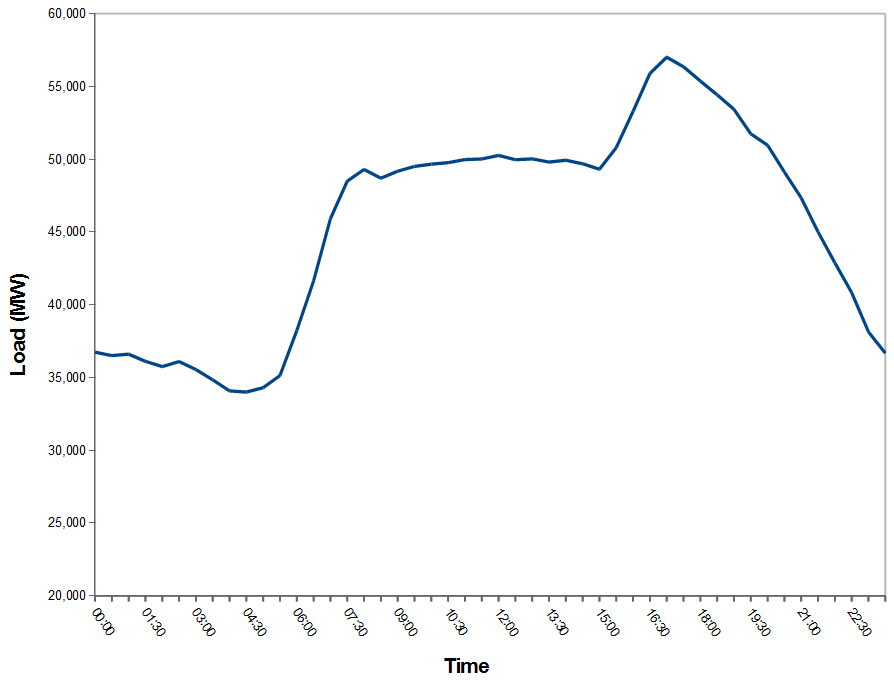Meeting Electricity Demand Throughout the Day
Demand for electricity is not constant throughout the say. Demand is lowest between midnight and 6am. As people get, up, turn on the lights, boil water to make tea, and switch on the toaster, demand starts to rise. During a major football match or film, during the breaks, demand shoots up as people boil the kettle. These major fluctuations in demand - a typical day is shown below - must be met.
Nuclear and coal fired power stations are very good at producing a steady output. A lump of Uranium will decay at a nearly constant rate for a long time. Any energy from the Uranium that is not used to generate electricity is wasted. Nuclear and coal fired power stations can provide the 'baseline', the minimum daily level of electricity consumption.
Hydroelectric and gas powered power stations can be quickly switched on. When demand for electricity rises, these power stations are switched on to generate the required electricity and when demand falls, these power stations are switched off.